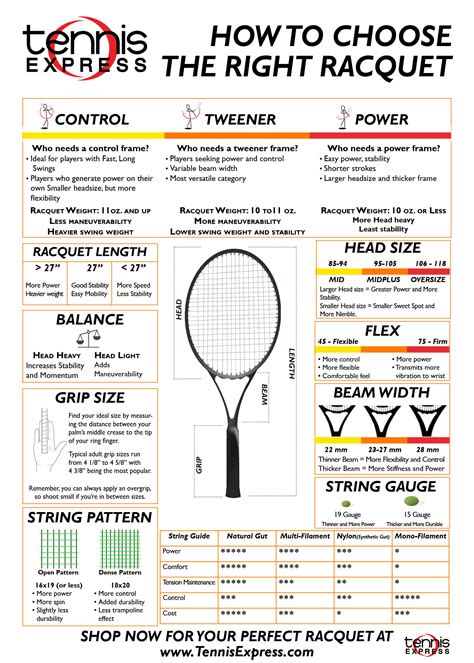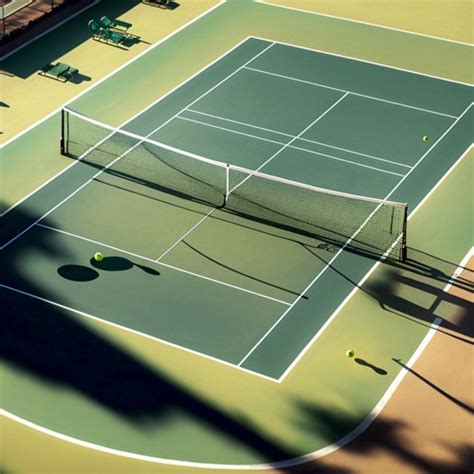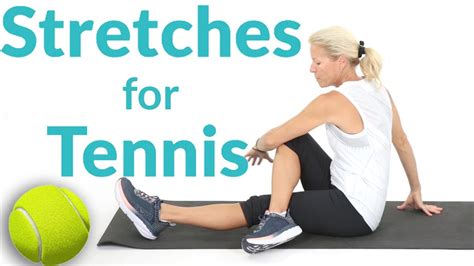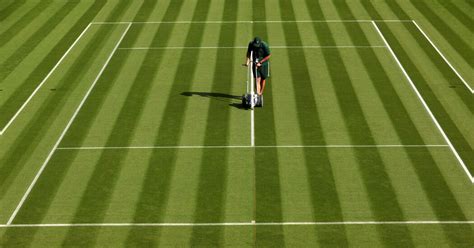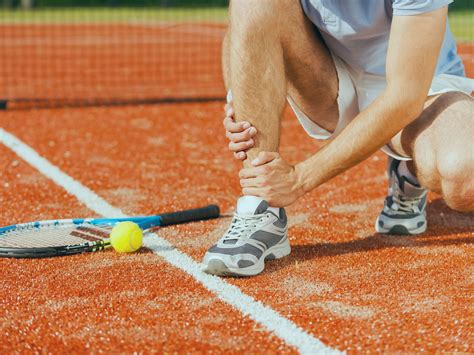Explore essential tennis fitness components, including strength exercises, endurance training, core stability, flexibility, and more to enhance your performance on the court.Welcome to our comprehensive guide on Tennis Fitness, where we dive deep into the essential exercises that can dramatically enhance both strength and endurance for players at all levels. Understanding the dynamic nature of tennis, it’s crucial to recognize the importance of a well-rounded fitness regimen tailored to the sport. Whether you’re a seasoned professional or a passionate amateur, incorporating specific strength exercises and endurance training techniques can significantly elevate your performance on the court. Additionally, we’ll explore the vital role of core stability and flexibility in optimizing your gameplay. Join us as we equip you with the knowledge and practical strategies to improve your tennis fitness and ultimately achieve your athletic goals. Get ready to serve up your best game yet!
Understanding The Importance Of Tennis Fitness
Tennis Fitness: encompasses more than just hitting the ball hard. The fast-paced nature of the game requires players to be in optimal physical condition to achieve peak performance. A strong foundation in fitness can significantly affect a player’s ability to react, move, and sustain energy throughout matches.
Enhancing overall physical strength helps players execute powerful serves and groundstrokes while also improving their ability to change direction quickly. Endurance training plays a critical role in allowing athletes to maintain their performance level throughout long matches, which can span several hours. The combination of strength and endurance training not only contributes to efficient movement on the court but also reduces the risk of injuries.
Furthermore, Tennis Fitness: involves developing specific skills that impact gameplay, such as agility and flexibility. A well-rounded fitness regimen will incorporate various exercises and techniques to improve these areas, ensuring that players can respond effectively to different game situations. In summary, understanding and prioritizing Tennis Fitness: is essential for anyone looking to enhance their performance and longevity in the sport.
Key Strength Exercises For Tennis Players
Building strength is a crucial component of Tennis Fitness, enabling players to hit harder, move faster, and withstand the physical demands of the game. Below are some key exercises that can enhance strength specifically for tennis players:
- Squats: Effective for building leg strength and power, squats mimic the movement patterns involved in tennis. Incorporate variations like single-leg squats to enhance balance and stability.
- Deadlifts: Great for developing lower back, glute, and hamstring strength, deadlifts contribute to explosive movements on the court.
- Bench Press: A fundamental upper body exercise, the bench press strengthens the chest and shoulders, crucial for powerful serves and forehands.
- Rotational Medicine Ball Throws: This exercise mimics the rotational movements in tennis, helping to build core strength and power for serves and groundstrokes.
- Lat Pulldowns: Important for developing upper body strength, lat pulldowns improve your ability to pull the racket back and execute powerful strokes.
- Plank Variations: Engaging in various plank positions helps build core stability, which is vital for optimal performance and injury prevention.
Incorporating these exercises into your training routine will help in enhancing your Tennis Fitness and making you a more formidable competitor on the court. Aim for a balance of strength training sessions alongside your regular practice to see optimal results.
Endurance Training Techniques To Enhance Performance
To boost your tennis fitness and overall performance on the court, incorporating endurance training into your routine is crucial. Endurance allows players to maintain a high level of performance throughout long matches, combat fatigue, and recover quickly between points. Here are some effective techniques to enhance your endurance:
1. Interval Training:
One of the most effective ways to improve cardiovascular endurance is through interval training. This involves alternating between high-intensity bursts of activity and periods of lower intensity or rest. For example, sprint for 30 seconds, followed by 1 minute of walking, and repeat for a total of 20–30 minutes. This mimics the stop-and-go nature of tennis matches.
2. Long-Distance Running:
Incorporate long-distance running into your weekly training regimen. Aim for a steady-paced run of 30–60 minutes at least once a week. This helps build overall aerobic capacity, which is essential for sustaining energy during extended rallies.
3. Fartlek Training:
Fartlek, meaning speed play in Swedish, combines continuous running with bursts of speed. During a run, alternate between jogging and sprinting for varying lengths of time. This not only boosts endurance but also improves your ability to change pace quickly on the court.
4. Circuit Training:
Design a circuit that includes various exercises that target both strength and endurance. For example, alternate between push-ups, burpees, lunges, and jump squats, performing each exercise for a set amount of time with minimal rest in between. This method keeps your heart rate elevated while building strength.
5. Sport-Specific Drills:
Incorporate drills that simulate match situations, such as playing points or longer rally exchanges with a partner. Focus on maintaining intensity and quick movements, which will prepare you for the demands of an actual match.
6. Cross-Training:
Engage in other forms of aerobic exercise, such as cycling, swimming, or rowing. Cross-training helps prevent injury by varying your workout routine while still enhancing cardiovascular endurance.
Integrating these endurance training techniques into your tennis fitness program will not only help you perform better on the court but also improve your overall health and fitness levels. Consistency is key; aim to include some form of endurance training at least 2–3 times a week as part of your holistic training approach.
Incorporating Core Work For Better Stability
Achieving optimal Tennis Fitness: requires a strong and stable core. The core muscles play a vital role in maintaining balance, supporting body movements, and generating power during swings. By incorporating specific core exercises into your training regimen, you can enhance your stability on the court and improve your overall performance.
Here are some essential core exercises to consider:
- Plank Variations: Regular planks, side planks, and forearm planks engage multiple core muscles. Aim to hold each position for 30-60 seconds, gradually increasing the duration as you build strength.
- Russian Twists: This exercise targets the oblique muscles, which are essential for rotational movements in tennis. Sit on the ground, lean back slightly, and twist your torso side to side while holding a weight or medicine ball.
- Medicine Ball Slams: This dynamic movement helps to develop core power and explosiveness. Stand with feet shoulder-width apart, raise the ball overhead, and slam it down to the ground with force.
- Bicycle Crunches: To work on your upper and lower abdominal muscles, lie on your back, lift your legs and perform a pedaling motion while bringing your elbow to the opposite knee.
- Dead Bug: This exercise encourages stability while engaging the entire core. Lie on your back with arms extended towards the ceiling and knees bent at 90 degrees. Slowly lower opposite arm and leg towards the ground, then return to the starting position.
Incorporating these core exercises into your fitness routine will not only enhance your stability but also aid in injury prevention by reinforcing proper body mechanics during play. Commit to a consistent core training program, and you’ll likely notice improved performance and resilience on the tennis court.
The Role Of Flexibility In Tennis Fitness
Flexibility is a crucial aspect of Tennis Fitness: that often gets overlooked. While strength and endurance are vital for performance, flexibility can enhance movement efficiency, reduce the risk of injuries, and improve overall athletic performance on the court.
Here are some key points highlighting the significance of flexibility in tennis:
| Benefits of Flexibility | Impact on Performance |
|---|---|
| Improved Range of Motion | Allows for better shot execution and movement around the court. |
| Injury Prevention | Enhances muscle elasticity and reduces muscle strain during intense play. |
| Faster Recovery | Promotes blood flow to muscles, aiding recovery after matches and workouts. |
| Enhanced Balance and Coordination | Fosters better body control, leading to more precise shots. |
To improve flexibility, tennis players should incorporate dynamic stretches into their warm-up routines and static stretches during cooldowns. Key areas to focus on include:
- Hip Flexors
- Hamstrings
- Shoulders
- Back Muscles
By integrating flexibility training into a comprehensive Tennis Fitness: program, players can enhance their overall performance and longevity in the sport.
Frequently Asked Questions
What are the main fitness components needed for tennis?
The main fitness components for tennis include strength, endurance, agility, flexibility, and balance. These elements work together to enhance overall performance on the court.
What specific exercises can help improve strength for tennis?
Strength exercises such as squats, lunges, push-ups, and resistance band workouts can effectively build muscle strength, particularly in the legs, core, and upper body.
How can endurance be built for tennis matches?
Endurance can be improved through cardiovascular exercises such as running, cycling, or interval training, which mimic the stop-and-go nature of tennis.
Why is flexibility important in tennis fitness?
Flexibility is crucial in tennis to enhance range of motion, reduce the risk of injuries, and improve overall movement efficiency during play.
What role does agility play in tennis performance?
Agility is essential in tennis for quick footwork and the ability to change direction rapidly, which can greatly impact a player’s ability to reach and return shots.
How often should tennis players incorporate strength training into their routine?
Tennis players should incorporate strength training at least 2-3 times per week, focusing on different muscle groups to optimize strength without overtraining.
Can bodyweight exercises be effective for tennis fitness?
Yes, bodyweight exercises such as planks, burpees, and mountain climbers can be very effective for building strength and endurance, as they improve muscle control and functional fitness.


